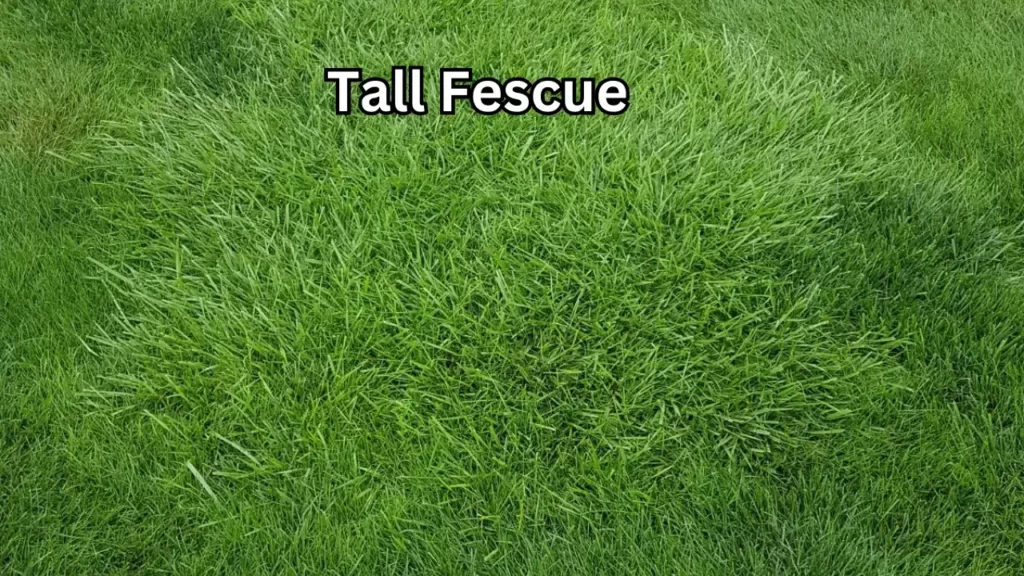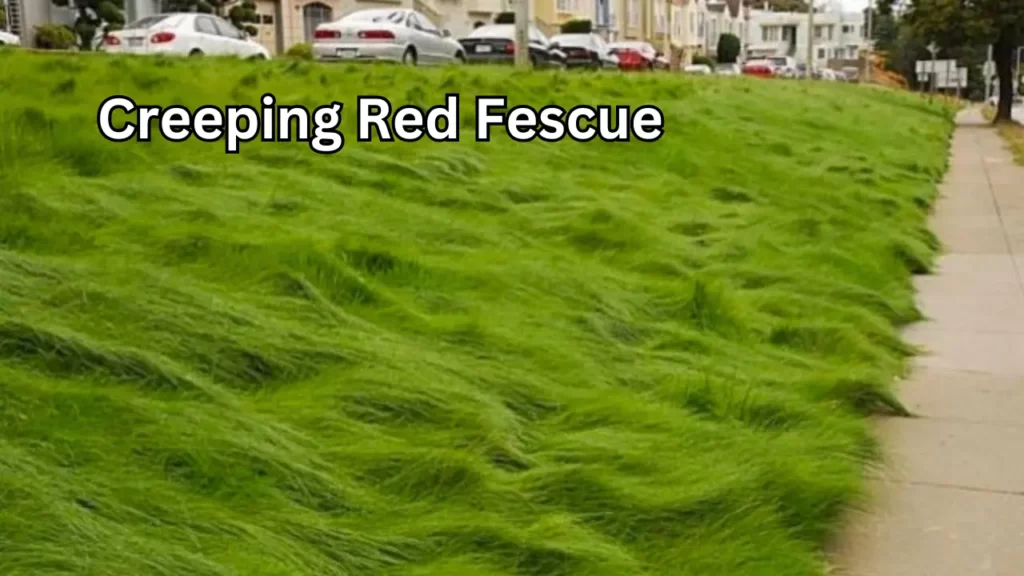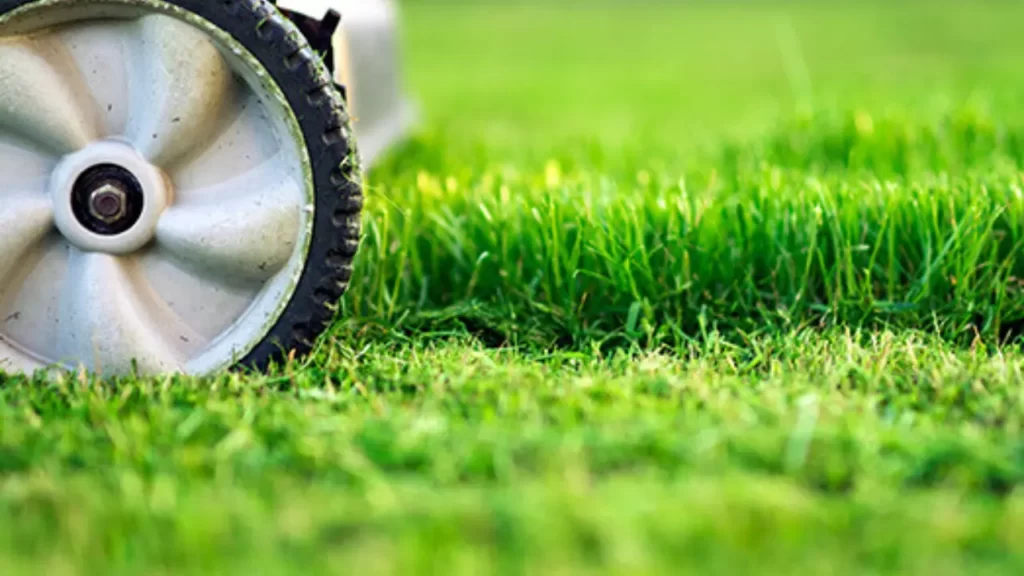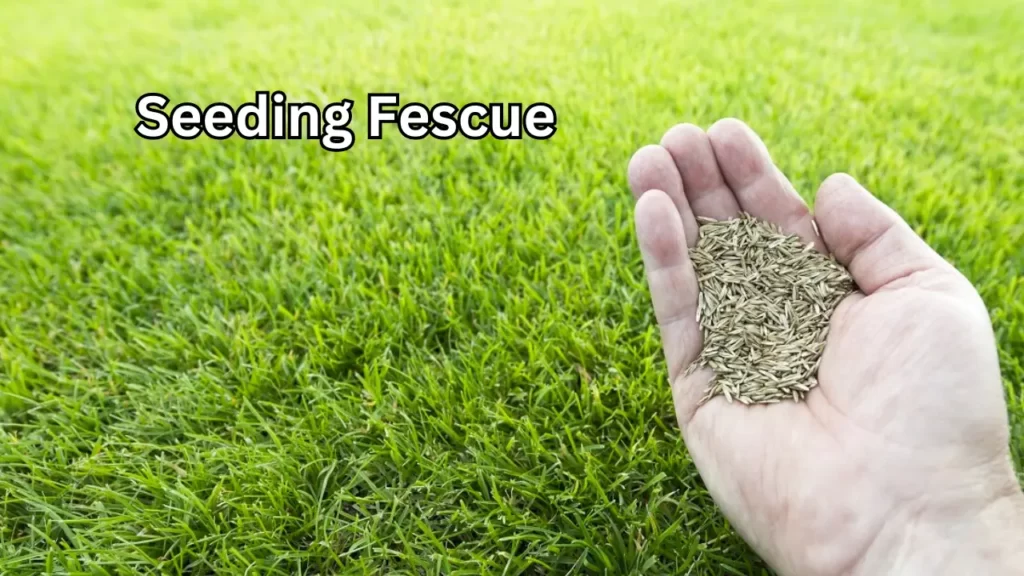Making a beautiful lush green lawn is the primary goal of every homeowner. To achieve picture-perfect lawn goals it is important to choose the right grass varieties. One of the popular choices of most homeowners is the Fescue Grass.
So, here in this article, we will explore more on Fescue Grass its types, advantages, benefits, planting and caring tips, and overall information on these grass types, which will help you to a better understanding of this grass and know why most homeowners prefer fescue grass for their lawn.

What is Fescue Grass?
Fescue grass is also known as the Festuca. Fescue is a cool seasoned grass species that belongs to the Poaceae family. This grass is popularly known for its ability to adapt to various climates and soil conditions. There are different types of fescue are there, but choosing the right one based on your lawn and climate condition can help you to grow healthy fescue grasses.
Types of Fescue Grass
Fescue grass is available in different types but here we listed the top 4 most popular fescue used for different landscapes.

Tall Fescue (Festuca arundinacea)
The Tall Fescue are popularly known for their drought tolerance, the deep root system of the tall fescue helps them to get water from the deeper soil in dry seasons. Also, these grass can thrive in a region with hot summer as well as cold winter which makes these grasses suitable for transitional climates.

Fine Fescue (Festuca spp)
Fine fescue is another popular fescue that has different species like creeping red fescue, chewing fescue, sheep fescue, and hard fescue. The fine fescue grass species are excellent shade tolerant and they need minimum maintenance making one of the easiest grass to grow. These features make the fine fescue suitable for woodland or shady areas with less foot traffic.

Creeping Red Fescue (Festuca rubra)
Creeping red fescue is the subspecies of the fine fescue and it grows in the shady and cooler regions. Its fine texture and ability to spread through rhizomes make it ideal for erosion control on slopes. Also, the shade-tolerant ability makes this grass suitable for the area with many trees or apartments.

Hard Fescue (Festuca longifolia)
The Hard fescue is popularly known for its ability to tolerate cold weather and adaptability to poor soil. Also, it is excellent drought resistant so it is mixed with other grass types to enhance the overall lawn drought resistance.
Also Read: Red Fescue vs Tall Fescue an in-depth comparison
Advantages of Fescue Grass
Here are some advantages of fescue which make it the first choice for many lawns.
Drought Tolerance
Fescue grasses are excellent drought resistance, especially the tall and hard fescue, the deep root system of the fescue grasses helps them to get water from deep in the ground. So, in the hot dry season, they can survive with minimum water availability.
Shade Tolerance
Fescue grasses are also good shade tolerant, particularly the creeping red fescue can thrive in shady areas where other grass types may struggle to grow.
Low Maintenance
Fescue grasses need less maintenance compared to the other warm-season grass species. So, these grass types are the best for homeowners to save time and effort on the lawn.
Pest Resistance
Certain fescue types exhibit natural resistance to pests, minimizing the need for chemical treatments. So, they can save some extra money on the chemicals to control pests.
Planting Fescue Grass
Here is the step-by-step process for planting the fescue grass.
Step 1: Soil Preparation
Initially, it is important to prepare the soil before planting the grass. Make a soil test using any soil test machine to identify nutrient deficiency. If it’s less then you can use garden lye to improve it. Remove any debris or any unwanted things using a garden rake and then level the soil.
Step 2: Seeding or Sodding
Now there are two types to plant fescue grass seeding or sodding, choose one method based on your lawn requirements and time constraints. Seeding is an easy and faster method whereas sodding is a little difficult method and needs some time.
Step 3: Watering and Establishment
After the seeding process, it is important to water the fescue grass for the essential establishment. Keep the soil consistently moist during germination for the healthy growth of grass.
Step 4: Fertilizing
Finally, apply the balanced fertilizer to promote healthy growth and lush green color.

Lawn Care for Fescue Grass
Mowing Tips
To keep the fescue healthy and visually appealing it is important to move the fescue grass at a certain height. Mow the fescue at a height of 2.5 to 3.5 inches to promote deep root growth and shade out weeds. But every grass type prefers different mowing heights so check the certain grass mowing guidelines for best results.
Watering Practices
Proper watering is essential for the fescue grass, especially during the dry and hot seasons. Water deeply and infrequently, aiming for around 1 to 1.5 inches of water per week, including rainfall.
Also Read: Kentucky 31 Tall Fescue vs Bluegrass Which is best
Weed Control
Weed control is also an essential maintenance technique to be followed, the overgrown weed can steal the essential nutrients from the fescue which will affect its health. So, regularly inspect the lawn for weeds and use a stirrup hoe which can make the weeding process easy and fast.
Dealing with Lawn Diseases
Commonly the fescue grasses are resistant to most common lawn diseases. But certain conditions may cause the fungal diseases. Regularly inspect for any disease signs, and if noticed take the appropriate action to control it.
Overseeding with Fescue Grass
Here are some of the tips for overseeding fescue.
Benefits of Overseeding
Overseeding is the process of planting new grass seeds on the existing lawn. The overseeding process offers several benefits to the fescue lawn, such as filling in bare patches enhancing density, and improving the lawn’s overall appearance.
When to Overseed
The best time for overseeding the fescue lawn is during the fall season. The cool temperature and warmth of retained soil promote optimal seed germination.

How to Overseed
To prepare the existing lawn for overseeding first you need to mow the lawn to a shorter height than usual and remove all the debris. Choose the high-quality seeds for the best results, and distribute them evenly using a broadcast spreader. Finally, lightly rake the soil so the soil and seeds are in contact.
Caring for Newly Overseeded Lawns
After overseeding the lawn makes sure to moisturize the lawn consistently to establish the new grass. Also, avoid the heavy foot traffic in the newly overseed area to allow the young grass to grow undisturbed.
Also Read: Chewing Fescue vs Creeping Red Fescue
Transition Zone Challenges and Solutions
Climate Challenges
Some of the fescue grasses can tolerate the different climate conditions, but the transition zone will give some challenges for fescue grass to grow especially the heat in summer and cold snaps in winter can stress the grass.
Managing Temperature Extremes
If you leave in an area where extreme heat temperature is experienced, then choose the fescue with heat and drought tolerance like the tall or hard fescue. Maintain a proper watering system like irrigation to help the grass withstand temperature extremes.
Pest and Disease Management
Regular monitoring and timely pest control measures can prevent infestations, while proper lawn care practices promote disease resistance.
Year-Round Maintenance Tips
Follow all the lawn care practices based on the changing seasons to keep your fescue lawn healthy and vibrant throughout the year.
Renovation and Repair
Identifying Lawn Problems
Regularly inspect the fescue grass for common mistakes such as thinning grass, bare spots, and weed invasions so you can repair or renovate it if necessary.
Lawn Aeration
Areating the lawn by making holes in the ground can help the fescue to get proper water and air with essential nutrients directly to the root. You can use a Garden Fork for the aeration process.
Dethatching
Thatch buildup can stop the water and air from reaching the soil which will stop the fescue from getting the proper nutrients. So, make sure to dethatch the lawn as needed to promote a healthy fescue lawn. You can follow the Bermuda grass dethatching process to dethatch the fescue grass.
Topdressing
Another healthy lawn care practice is adding a thin layer of compost or topsoil over the lawn can improve soil structure and provide essential nutrients to the fescue grass.
Also Read: Kentucky Bluegrass vs Fescue vs Ryegrass a quick comparison
Alternative Lawn Options
Here are the alternative grass types for the fescue grasses which also have similar benefits and characteristics.

Bermuda Grass
Bermuda grass is also a popular grass species that is grown in hot climates. These grasses are highly durable and widely used for sports fields and golf courses.
Zoysia Grass
Zoysia grass is also a warm-season grass which thrives in hot climates. This grass is excellent heat and drought tolerance. It forms a dense, attractive lawn with minimal maintenance.
Buffalo Grass
The Buffalo grass is a warm seasoned grass that needs minimal water and mowing which makes it the grass type with low maintenance. It is well-suited for arid regions.
Centipede Grass
Centipede grass is a low-growing, warm-season grass that spreads quickly, creating a dense carpet-like lawn.
Why Fescue Grass Used Sports Fields
Advantages of Fescue in Sports Fields
The fescue grass provides a firm enough playing surface which reduces any risk for potential athletes. Also, its ability to quickly recover from wear makes it ideal for high-traffic areas.
Best Practices for Sports Field Management
Mowing at a certain height, proper irrigation system, and fertilization are the essential maintenance practices to maintain a high-performing fescue sports field.
Preventing Field Damage
To prevent the fescue field from excessive damage Implementing rotational play and using protective covers during events can prevent excessive damage to the fescue grass.
Year-Round Sports Field Maintenance
Implement all the maintenance practices based on different climate conditions to maintain the health and appearance of the fescue field.
Environmental Impacts
Water Conservation
The fescue lawn can help to conserve water if you follow the water-wise lawn techniques. Especially drought-resistant fescue can help preserve the water in the dry season due to its ability to survive in minimal water whereas other grass needs more water to be in the best condition.
Benefits for Local Wildlife
The fescue lawns provide a habitat for various insects and small animals, contributing to local biodiversity.
Common Myths About Fescue Grass
Fescue is Not Suitable for Warm Climates
No, some species of fescue are not suitable for warm climates but few of the fescue can grow in warm climates making it a good option for transitional zones.
Fescue Grass Requires High Maintenance
No, fescue grass species are one of the low-maintenance required grasses making them almost maintenance-free grasses compared to the warm seasoned grasses.
Fescue Grass Causes Allergies
No, fescue grass is commonly not allergic to most people but some people may have allergies to this grass based on their skin condition.
Fescue is Prone to Disease
With proper care and pest management, fescue grass can resist disease and maintain a healthy appearance.
FAQs
Is fescue grass suitable for warm climates?
Not every fescue grass is suitable for warm climates but some fescue can grow in warm climates such as tall and hard fescue.
Can I overseed my lawn with fescue grass?
Yes, you can overseed your lawn with fescue grass it will help you to fill in the empty spots and increases the overall visual appeal of the lawn.
How often should I mow my fescue lawn?
Every 2-3 weeks mowing the fescue lawn is the best practice, but you can consider the growth rate of fescue and mow them at a certain height.
Is fescue grass safe for pets and children?
Yes, fescue grass is non-toxic, and they’re safe to play for both pets and children.
what species is fescue?
Fescue is a cool-season grass species belonging to the genus Festuca.
Conclusion
Fescue grasses are one of the best grass types that can be used for different landscapes like lawns, sports fields, etc. But make sure to get the right type of fescue for your lawn based on your lawn and climate conditions. Follow all the maintenance practices to keep your fescue grass lawn in healthy growing condition.
